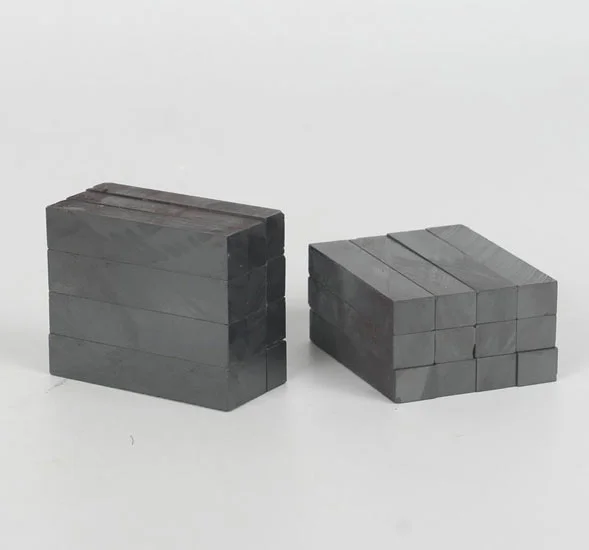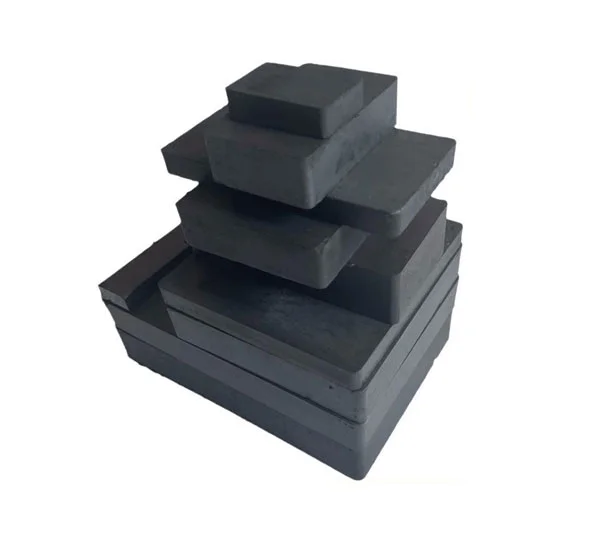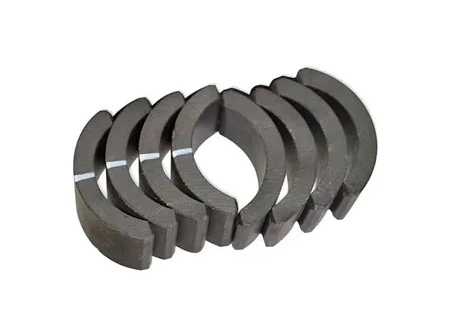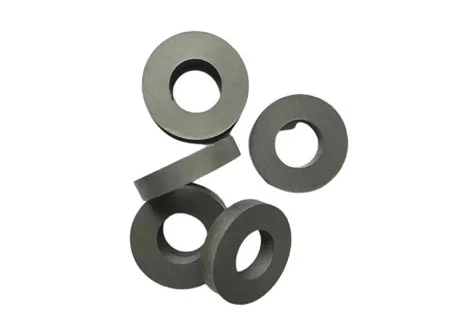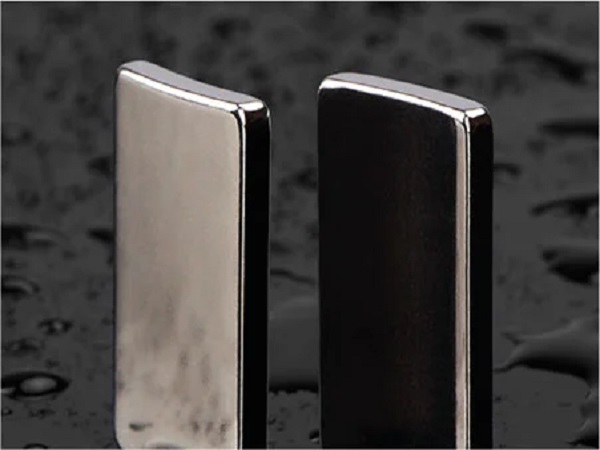Ferrite block magnets are a type of permanent magnet made from a mixture of iron oxide and barium or strontium carbonate. These magnets are also known as ceramic magnets due to their brittle, ceramic-like texture.
Ferrite Magnets, also known as ceramic magnets, are made of a composite of lron oxide and barium arbonate BaC03) or strontium carbonate (SrC03), Widely available since the 1950's, this materialis commonly available and at a lower cost than other types of materials used in permanent magnets. Ceramic magnets aremade using pressing and sintering. Sintered magnets are a type of ceramic composed of the compressed powder of the aloy material being used. Sintering involvesthe compaction of fine aloy powder in a dry and then fusing the powder into a soid material with heat While the sintered magnets are solid, their physical propertiesare more similar to a ceramic and are easily broken and chipped.
Ferrite block magnets are rectangular in shape and have a north and south pole on opposite ends. They come in various sizes and strengths, making them useful for a wide range of applications. They are often used in applications such as motors, generators, speakers, and magnetic separators, as well as in educational and hobbyist projects.
One of the main benefits of ferrite block magnets is their low cost compared to other types of magnets, such as neodymium magnets. They are also resistant to corrosion and can withstand high temperatures, making them suitable for use in harsh environments.

